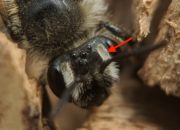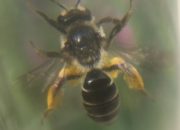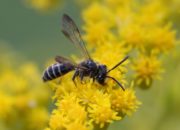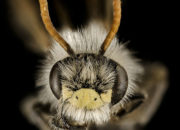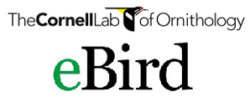Genus Andrena is the most diverse bee genera in Vermont, with nearly 70 species recorded. The highest diversity and abundance occurs in the spring, with a distinct set of species flying in the fall. In Vermont, at least 40% of the species are thought to be flower specialists. Andrena are the primary host for most Cuckoo Nomad bees.
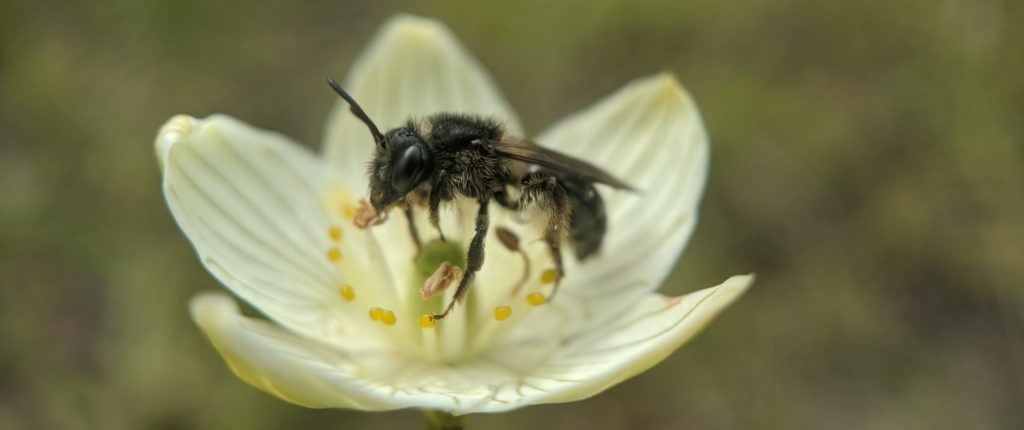
Parnassia Miner (Andrena parnassiae) © Spencer Hardy
Genus level ID
This genus is a good one to become familiar with since they are often a dominant part of the local bee fauna. These are generally dull-colored hairy bees, ranging in size from a few millimeters to the size of a small bumble bee. The most distinctive feature is the facial foveae of the females (see image below, click to enlarge). These hairy groves are unique to this genus, but not always visible in photos.
Males often appear slender, with large, angular heads and long, sparse hairs. In some species, the mandibles and/or antenna are significantly elongated. Some males also have yellow on the clypeus and in a few species, on the surrounding face.
Females have specialized hair for carrying pollen on the rear of their thorax, femur, and tibia.
Similar Genera
Cellophane Bees (Genus Colletes) – See the genus page here for more details on how to distinguish Mining Bees and Cellophane Bees.
Furrow Bees (Genus Halictus) – Orange-legged Furrow Bee (Halictus rubicundus) have bold white stripes on the abdomen and could be mistaken for a Mining Bee, though they lack the facial foveae and tend to have smaller heads.
Species Level ID
Many Mining Bees are difficult to ID to species, even with the specimen in hand. A few, however, are readily recognizable by field marks visible through binoculars or in a photo. The following grids break the genus into more manageable chunks based off the time of year and/or associated flower (click an image explore further). Knowing the associated flower will go a long way towards finding and identifying many of the specialists, though the flower alone is not a fool-proof identification feature, since almost all bees will occasionally visit the “wrong” flower. In general males are much harder to ID than females.
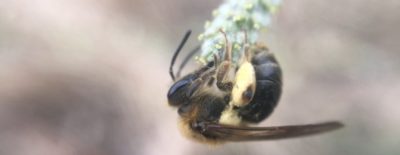
Early Spring on Willows
Willows are host to at least 6 different Mining Bee specalists, though are also visited by a wide range of early season bees (and other insects).
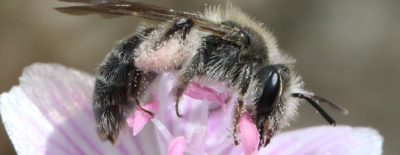
Spring Hardwood Forests
The diverse understory of a healthy northern hardwood forest are the only home for many bee species, including a range of specialists. Spring Beauties, Geranium, and several other spring 'wildflowers' have specialists that are covered here. Image courtesy Micheal Veit.
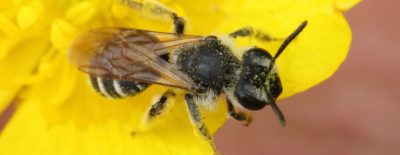
Other Spring Species
Many of the Mining Bees species don't fit neatly into one of the other categories, and are included here. With dozens of species and microscopic differences, most spring Mining Bees, especially in this group, are best left unidentified. Image courtesy Micheal Veit.
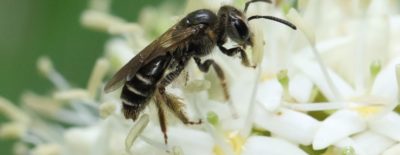
Flowering Shrubs
As spring progress, many shrubs and understory trees bloom and attract a somewhat distinct group of bees. Some of the species found on these plants are also found on forbs, but other, like a set of four dogwoods specialists, are rarely found away from flowering wood plants, which can be easily overlooked among the more conspicuous spring flowers. To find these bees, look for flowering dogwoods, hawthorns, blueberries, mountain maples, chokecherries, service berries, and others. Image courtesy Micheal Veit.
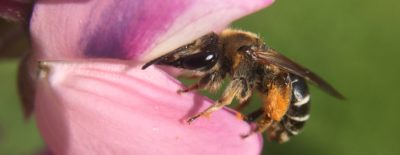
Summer
The height of summer (mid-June through July) is the low point for Mining Bee diversity. A few distinctive species are active, while the last of spring species are wrapping up for the season.
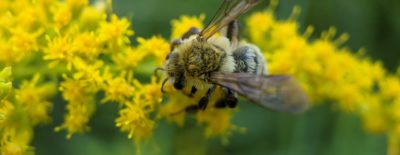
Fall
The flush of blooming goldenrods and asters bring out an entirely different group of Mining Bees. Many of the roughly 10 species active in August and September can be identified from photos.
Specialization data primarily from Jarrod Fowler & Sam Droege.
The table below is a complete list (as of February 2021) of all Mining Bee species confirmed for Vermont. Links will take you to individual species pages with natural history notes, identification tips, and a map.
All Vermont Mining Bees
Please note that many of our datasets have not been published yet, so the maps are incomplete.
